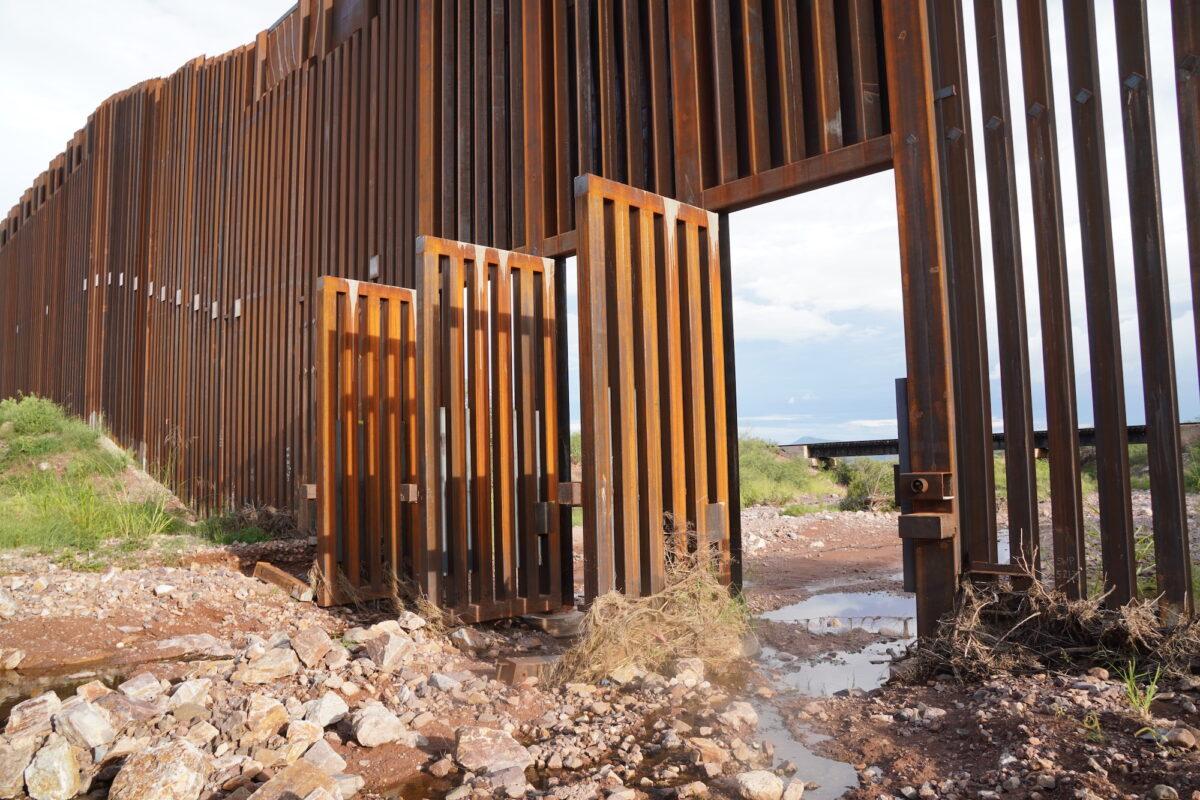Nearly two years after U.S. President Joe Biden ordered a halt to construction on the wall between the United States and Mexico, the U.S. Department of Homeland Security (DHS) announced on Dec. 13 that it will work to close gaps along the border project.
Biden’s 2020 campaign promise was that he wouldn’t build “one more foot” of the border wall, which was one of former President Donald Trump’s most prominent objectives.
The Biden administration is faced with the end of Title 42, which is set to expire on Dec. 21. The DHS has said that could lead to an estimated 9,000 to 14,000 illegal immigrants crossing from Mexico into the United States every day.
Created as part of the Public Health Service Act under President Franklin D. Roosevelt in 1944, Title 42 was designed to prevent the introduction of contagious diseases in the United States.

At the start of the COVID-19 pandemic in 2020, the Trump administration invoked the order to restrict migrant entry into the United States.
For the 12 months that ended on Sept. 30, Customs and Border Protection stopped migrants more than 2.76 million times, compared with 1.72 million times in fiscal year 2021, which was the previous high.
Once Title 42 is lifted, the number of migrants that U.S. Border Patrol agents must process will “likely be double or greater,” according to a DHS Office of Inspector General report released in September.
In addition to closing seven “small gaps” in the wall in the Yuma, Arizona, sector and filling in another space in the El Paso, Texas, sector, crews will also work on environmental issues surrounding the wall and finish building roads, according to the DHS.
Overall, the new work will occur in the Border Patrol’s San Diego sector, which includes western Arizona and part of eastern California, and the El Paso sector, which covers western Texas and New Mexico.
Homeland Security Secretary Alejandro Mayorkas indicated last year that gaps in the wall would have to be closed, but the DHS has been slow to move forward with the task.
The gaps have allowed illegal immigrants to enter the United States and add to the record number of illegal border activity that has escalated since Biden took office in January 2021.
Building the border wall was one of Trump’s most widely discussed campaign promises in 2016. The Trump administration erected more than 450 miles of fencing and had planned on adding about 300 more miles of construction.
After Biden took office, crews were permitted to fill in holes and tie down loose materials, but they were ordered to halt construction.
A Government Accountability Office audit conducted in 2021 discovered that 69 miles of the wall constructed during the Trump administration includes all of the necessary technology and roads.
Construction at some parts of the wall created environmental issues that need repairs, which will take place as part of the new project, according to the DHS.
This work will include installing drainage systems, adding safety features to roadways and remediating some construction sites between El Paso and San Diego, the DHS stated.
“Prior to work, the Department of Homeland Security will work closely with stakeholders, including impacted landowners, tribal, state and local elected officials, and federal agencies to seek input and help on prioritizing potential remediation activities within each sector,” the DHS said in a statement.
Border Patrol agents have frequently emphasized the importance of a wall to help control illegal immigration.
In El Paso, Border Patrol stated that its agents are stopping migrants about 2,400 times per day on average, compared with approximately 1,700 each day in previous months.
The migration rate into Texas from Mexico has recently spiked with the rapidly approaching end of Title 42.
Migrants processed under the policy aren’t permitted to request asylum in the United States and are removed from the country.
On paper, Title 42 covers the Canada and Mexico borders and migrants of all nationalities. It has mostly been used along the southern border to remove illegal immigrants from Mexico, Guatemala, Honduras, and El Salvador from the United States.
One of Biden’s first actions as president was ending the “Remain in Mexico” policy implemented under Trump.
Under that law, asylum-seekers were required to remain in Mexico while their asylum claims were processed. Figures show that the policy discouraged false asylum claims and decreased the number of illegal immigrants attempting to cross the border.

Mayorkas said on Dec. 13 that the department is preparing for the lifting of Title 42.
“Economic and political instability around the world is fueling the highest levels of migration since World War II, including throughout the Western Hemisphere,” he said. “The surge in global migration is testing many nations’ systems, including our own.
“The Title 42 public health order remains in place through December 20, 2022, and until then, DHS will continue to expel single adults and families encountered at the southwest border under that authority.”
When Title 42 expires, the DHS will transition from Title 42 to Title 8 processing.
Title 8 is a federal law that allows expulsions if illegal immigrants don’t qualify for asylum.
In fiscal year 2022, Border Patrol removed 1.1 million under Title 8 compared with roughly 1 million illegal immigrants under Title 42.
“We know that smugglers will spread misinformation to take advantage of vulnerable migrants,” Mayorkas said. “Let me be clear: Title 42 or not, those unable to establish a legal basis to remain in the United States will be removed.”
Some lawmakers believe that the Biden administration hasn’t done enough to maintain border security.
On Dec. 13, a bipartisan group of Democratic and Republican members of Congress sent a letter to the White House urging that Title 42 remain in place past Dec. 21.
The letter, written by Sen. John Cornyn (R-Texas), Sen. Joe Manchin (D-W.Va.), Rep. Tony Gonzales (R-Texas), and Rep. Henry Cuellar (D-Texas), was sent to Biden. In it, the legislators request that the Centers for Disease Control and Prevention extend Title 42.
“We have a crisis at our southern border. Never before in our nation’s history have we experienced this scope and scale of illegal border crossings, and we remain concerned that your administration has not provided sufficient support or resources to the men and women of the Department of Homeland Security (DHS) who are tasked with maintaining border security,” the lawmakers wrote.
“DHS has not outlined a viable plan to maintain operational control of the southern border. This situation is untenable, and we must work together to keep in place DHS’s authority to quickly expel migrants until an acceptable set of alternative policies and resources is put into place.”





